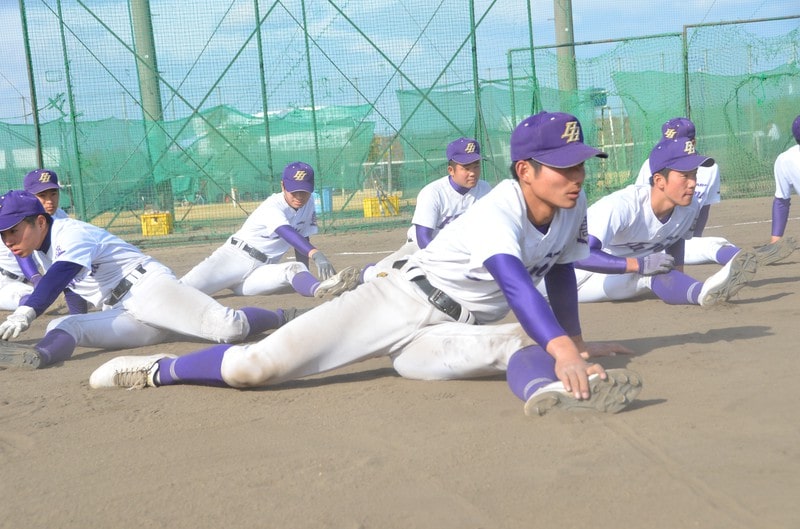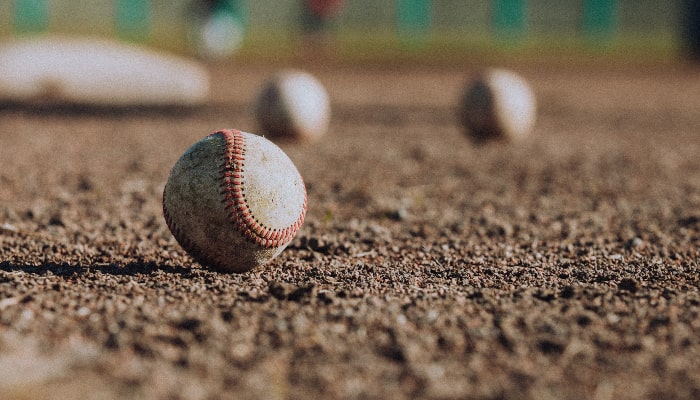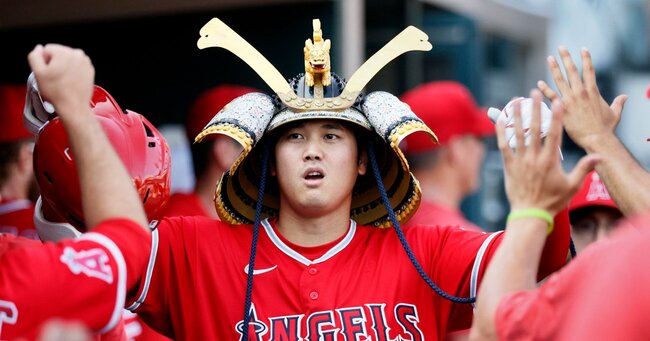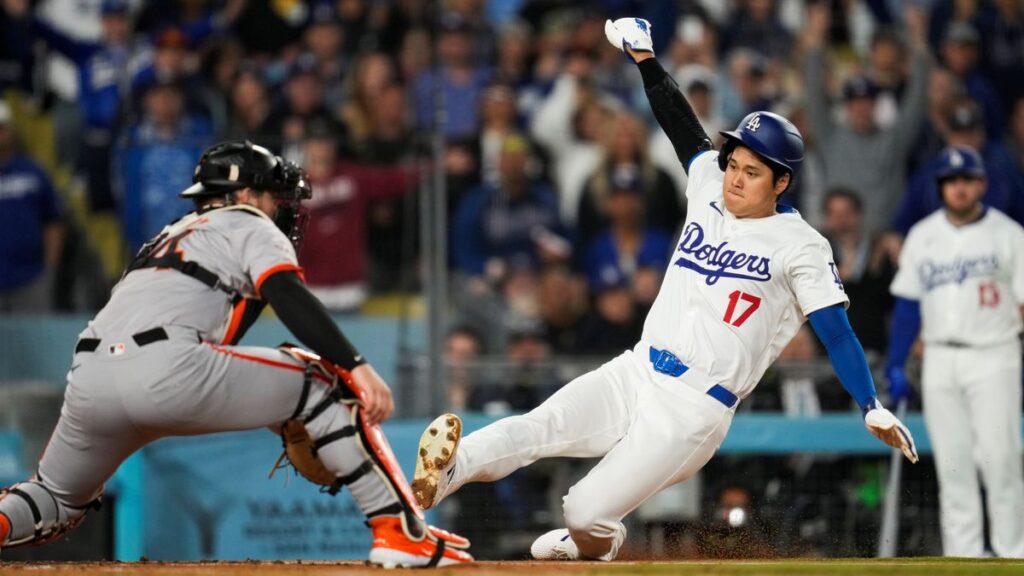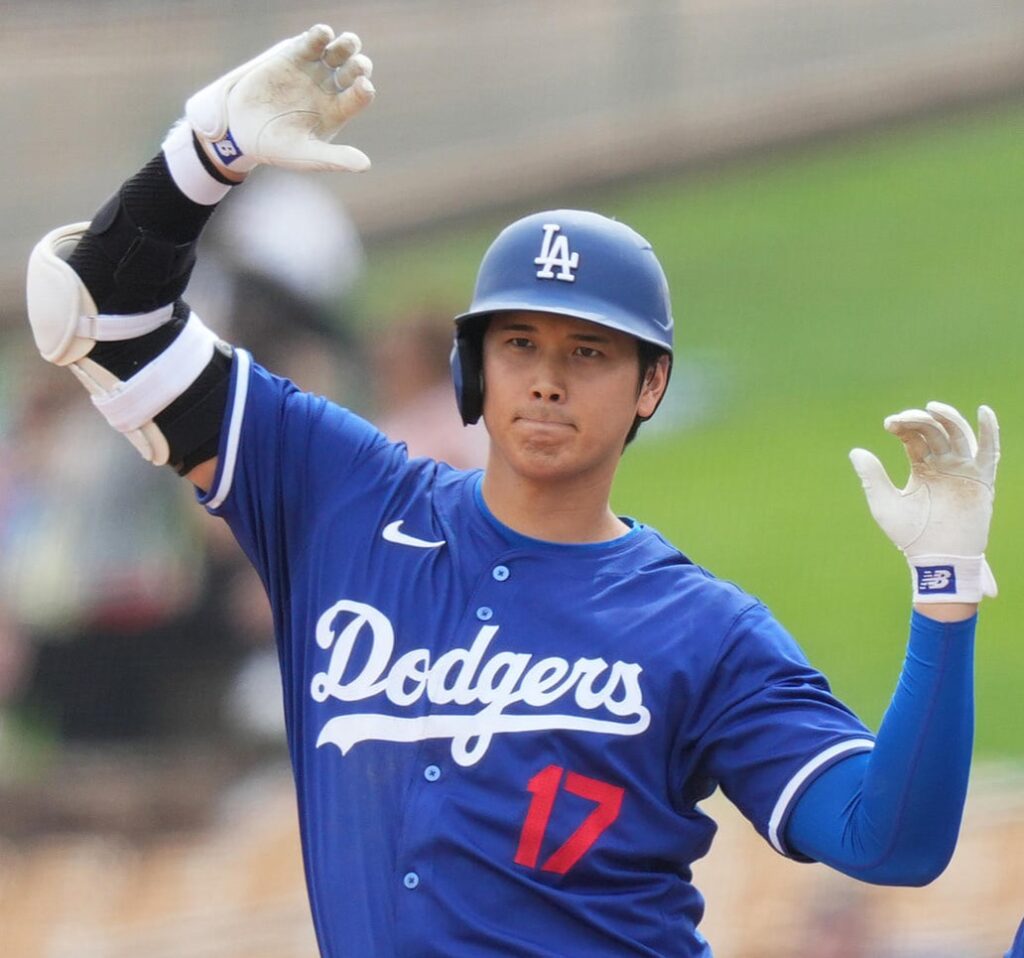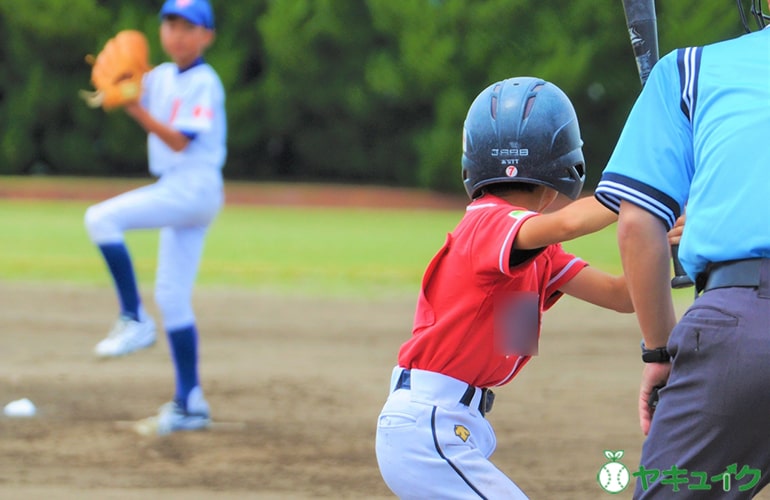
Batting average in baseball is an important indicator for evaluating a player’s batting ability.
A player with a high batting average is more likely to hit a home run and is a valuable asset to his team.
By correctly understanding how to calculate batting average, you can accurately grasp your own performance and use the information to further improve your skills.
This article will explain in detail the basic calculation method for batting average and related information.
目次
- 1 What is batting average? Let’s understand the basic concept
- 2 How to calculate batting average
- 3 Points to note when calculating batting average
- 4 Relationship between batting average and batting form
- 5 The highest batting averages of all time and how to calculate them
- 6 How to practice to improve your batting average
- 7 Factors that affect batting average
What is batting average? Let’s understand the basic concept
Batting average is one of the most basic and important indicators for evaluating a player’s hitting ability in baseball.
A player with a high batting average is more likely to hit a home run and is a valuable asset to his team.
Here we will take a closer look at the definition of batting average, its importance, and how it differs from other batting indicators.
The definition of batting average and its importance
Batting average is an indicator of the percentage of times a player hits a home run out of the number of times he has been at bat (at bats).
Specifically, it is calculated using the following formula:
For example, if a player records 30 hits in 100 at-bats, his batting average is
In this case, a batting average of .300 means that a player hit a home run 30% of the times he went to bat.
Batting average is an important indicator for evaluating a player’s batting ability.
Players with a high batting average have more opportunities to score runs and are important assets in strengthening their team’s offensive power.
Batting average also indicates a player’s consistency and accuracy, making it an important metric for scouts and coaches to use when evaluating players.
Differences between batting average and other batting indicators
Besides batting average, there are many other indicators to evaluate a player’s batting ability.
Each metric evaluates a different aspect of a player’s performance and helps understand their overall hitting ability.
On-base percentage (OBP):
On-base percentage is an indicator of the percentage of times a player reaches base out of the number of times he is at bat.
It takes into account walks and hit by pitch, so it evaluates a broader range of batting ability than batting average.
On-base percentage is calculated using the following formula:
Slugging percentage (SLG):
Slugging percentage is a measure of a player’s hitting power.
It measures overall batting power by taking into account the frequency of singles, doubles, triples, and home runs.
It is calculated using the following formula:
Here, the total number of bases is calculated by converting each type of hit into a base and adding them up.
OPS (On-base percentage + Slugging percentage):
OPS is an indicator that combines on-base percentage and slugging percentage, and is used to evaluate a player’s overall batting ability.
A player with a high OPS is an indication of both good on-base ability and power.
Runs Thrown (RBI):
Runs Thrown refers to the number of times a player brings a teammate home with a hit or other strike that results in a run.
A player with a lot of RBIs is considered to have a high ability to score runs.
Home Runs (HR):
Home runs indicate the total number of home runs a player has hit.
A home run is the hit with the highest scoring value, and players who hit a lot of home runs have excellent long-range hitting ability.
By combining these indicators, it is possible to evaluate a player’s hitting ability from multiple angles.
Batting average is a basic indicator and an important factor in showing a player’s consistency, but by evaluating it in conjunction with other indicators, it is possible to get a more comprehensive understanding of a player’s batting ability.
By understanding the definition of batting average, its importance, and how it differs from other batting metrics, you can accurately evaluate a player’s performance and develop appropriate strategies.

How to calculate batting average
Batting average is the basic metric used to evaluate a player’s hitting ability in baseball.
Accurate calculations allow you to properly evaluate a player’s performance.
Here we will explain in detail the basic formula for calculating batting average and provide specific calculation examples.
Introduction to basic calculation formulas
Calculating batting average is very simple and uses this basic formula:
This formula calculates the percentage of times a player gets a hit by dividing the number of hits he records by the number of at-bats he has had.
Batting average is usually expressed to three decimal places, such as .300 (or 30%).
Specific calculation example
Let’s take a closer look at how batting average is calculated by looking at some specific calculation examples.
Example 1: Simple calculation
Let’s say a player has the following stats during the season:
- Hits: 50
- Number of hits: 200
In this case, the batting average is calculated as follows:
Therefore, this player’s batting average is .250.
Example 2: When there are many strokes
Now consider another player who has more at-bats and records the following stats:
- Hits: 150
- Number of strokes: 500
In this case, the batting average is calculated as follows:
This player will have a batting average of .300, which is a very good batting average.
Example 3: Computational Complexity
Let’s consider a slightly more complex example. If a player has the following performance records:
- Hits: 123
- At bats: 410
In this case, the batting average is calculated as follows:
This player’s batting average is also .300. The important thing here is that no matter how simple the formula is, it is necessary to input accurate data.
Example 4: In-season fluctuations
Let’s also consider an example of how batting averages can vary over the course of a season. Suppose a player had the following stats:
- First half season: 75 hits, 250 at bats
- Second half of the season: 85 hits, 260 at bats
To calculate batting average for an entire season, use the total hits and at-bats:
In this case, the batting average is calculated as follows:
The player’s batting average for the season is .314, which takes into account fluctuations in performance throughout the season.
The importance of batting average calculations
Batting average is a fundamental metric for evaluating a player’s batting performance, but more importantly, it indicates a player’s consistency and accuracy.
A player who maintains a high batting average is extremely valuable to a team and contributes greatly to the outcome of a match.
Accurately calculating batting average is also important for player training and strategy planning.
In this way, understanding how to calculate batting average and calculating it accurately through specific examples is the basis for evaluating players in baseball.
Batting average is more than just a number; it is an important indicator for evaluating a player’s performance from multiple angles.

Points to note when calculating batting average
When calculating batting average, there are a few important points to keep in mind.
To calculate an accurate batting average, it is essential to properly understand the definition of at-bats, their impact, and the types of hits and their impact on batting average.
Below we explain each point in more detail.
The definition of strokes and its impact
One of the basic elements in calculating batting average is the number of hits.
A precise understanding of the definition of batting average is important in order to calculate a correct batting average.
At-bats include certain situations, such as the following, but other situations do not count towards the at-bat count:
Situations included in the stroke count:
- Hit
- Strikeout
- Ground out
- Flyout
- Double Play
These situations include when a player swings the bat and gets an out or a hit.
In contrast, the following situations do not count:
Situations not included in the stroke count:
- Walk
- Dead ball
- Sacrifice bunt
- Sacrifice Fly
In these situations, a player reaches base or is out without swinging the bat, and so does not affect batting average calculations.
For example, walks and hit by pitch do not count at-bats, so they are not included in the calculation of batting average.
If you perform calculations without understanding the definition of batting average, you may end up with a value that differs from the actual batting average.
Knowing the exact number of hits allows you to evaluate a player’s true hitting ability.
Types of hits and their impact on batting average
Another important factor in calculating batting average is the type of hit.
There are several types of hits, each of which has a different impact on batting average.
Single: A single is a hit in which a player reaches first base. Singles are the most basic type of hit and directly affect batting average.
Double Hit: A double hit is a hit in which a player reaches second base. Double hits are included in batting average and are an important factor in evaluating a player’s hitting ability.
Triple Hit: A triple hit is a hit in which a player reaches third base. Triple hits are very rare and are an important factor in increasing a player’s batting average.
Home Run: A home run is a hit that goes over the fence and out of the field. Home runs are the most valuable hits and have a large impact on batting average.
In calculating batting average, all hits are counted equally, although the type of hit itself does not directly affect batting average.
In other words, both a single and a home run are counted as one hit.
For example, if a player had 30 hits in 100 at-bats, and those 30 hits were 15 singles, 10 doubles, and 5 home runs, his batting average would be calculated as follows:
In this example, each type of hit counts as one hit, so the batting average does not change depending on the type of hit.
When calculating batting average, it is very important to correctly understand the definition of an at-bat and the types of hits.
By understanding which situations are included and which are not, and using accurate data for calculations, it is possible to evaluate a player’s true batting ability.
Also, because all hits are counted equally, the type of hit does not directly affect batting average, but it is an important factor when evaluating a player’s overall batting performance.
Through accurate batting average calculation, you can accurately understand your players’ performance and create appropriate strategies and training plans.

Relationship between batting average and batting form
Batting average is an important indicator of a player’s batting ability, but proper batting form is essential to improving that batting average.
By improving your batting form, you can increase your chances of hitting a home run, which will ultimately improve your batting average.
Here, we will explain in detail how to improve your batting form and increase your batting average, as well as provide examples of the batting form and batting averages of professional players.
Improving batting form and batting average
Batting form directly affects the accuracy and power with which a player hits the ball, and therefore has a significant impact on batting average.
Below, we will explain how improving your batting form can contribute to improving your batting average.
Establishing the correct stance: The basis of batting form is to have a stable stance. It is important to stand with your feet shoulder-width apart and distribute your weight evenly. A stable stance will improve the balance of your swing and allow you to catch the ball firmly. This will increase the probability of hitting the ball and improve your batting average.
Swing trajectory and timing: The swing trajectory is closely related to the timing of catching the ball. By keeping the swing trajectory horizontal, the contact area with the ball will increase, and the probability of hitting will increase. Also, in order to match the timing with the ball, it is important to look closely at the pitcher’s release point. If the timing is right, the swing will be smoother, leading to an improvement in batting average.
How to use your body: Your hitting form requires you to use your whole body efficiently. By effectively transferring the power of your lower body to your upper body, you can add strength to your swing. For example, being conscious of how you step into the ball and how you rotate your hips will enable you to make a powerful swing. This will allow you to transfer your power firmly to the ball, making it easier to hit the ball.
Stable line of sight: It is important to keep your eyes on the ball when batting. By keeping your eyes on the ball and following closely from the pitcher’s release point to the catcher’s mitt, you can swing with accurate timing. A stable line of sight increases your chances of making contact with the ball, which leads to an improved batting average.
Practice and feedback: Continuous practice and feedback are essential to improving your batting form. It is important to objectively evaluate your form through video analysis and coaching and find areas for improvement. By correcting your form based on feedback from practice and checking the effects in actual games, you can expect to see an improvement in your batting average.
Examples of professional players’ batting form and batting averages
Professional players have perfected their batting form through years of experience and training, and this form directly translates to a high batting average.
Below are some examples of batting form and batting averages of some professional players.
Ichiro: Ichiro is one of the players who has maintained a batting average of over .300 for many years. His batting form is very simple and compact. Ichiro improves his bat control by not spreading his feet wide and smoothly transferring his weight. He also keeps a close eye on the ball and swings with a flexible wrist. This has allowed him to maintain a high batting average.
Miguel Cabrera: Miguel Cabrera is also a player with a high batting average, and his batting form has many characteristics. Cabrera uses a firm stance and powerful lower body movements to add power to his swing. He also has very accurate timing for catching the ball and the technique to hit the ball at a wide range. This allows him to consistently record a high batting average.
Mike Trout: Mike Trout also has an excellent batting form. His form is very well-balanced and features a smooth swing that uses the whole body. Trout increases his batting average by watching the ball closely and starting his swing early. His form is an ideal example of how to combine power and accuracy.
To improve your batting average, it is essential to acquire the correct batting form.
You can improve your batting average by learning from the batting form of professional players and improving your own form.
Through continuous practice and feedback, you can find your optimal hitting form and improve your performance.
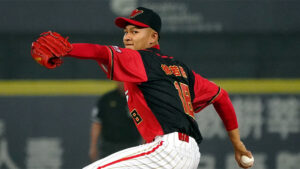
The highest batting averages of all time and how to calculate them
Batting average is an important indicator of a player’s hitting ability in baseball.
The players who recorded the highest batting averages in history have left their mark in baseball history for their outstanding batting skills.
Here we will explain in detail the highest batting averages in the history of Major League Baseball and Japanese professional baseball and how to calculate them.
Highest batting average in major league history
In Major League Baseball (MLB), many great players have recorded high batting averages.
Among them, we will introduce players who boast particularly high batting averages.
Ty Cobb:
Ty Cobb has the highest career batting average in MLB history. His batting average was .366, which he achieved over a 24-year career from 1905 to 1928. Cobb’s hitting technique was supported by excellent bat control and speed.
Rogers Hornsby:
Rogers Hornsby is one of the players with the highest single-season batting average in MLB history. His highest batting average was .424, which he achieved in 1924. Hornsby was known as a hitter who combined power and accuracy, winning numerous batting titles.
George Sisler:
George Sisler is another of the all-time greats in batting averages. His highest batting average was .420 in 1922, when Sisler recorded 257 hits. His batting technique and consistency are examples to many players.
The highest batting average in Japanese professional baseball history
Many players in Nippon Professional Baseball (NPB) have also recorded high batting averages.
Below is a list of the players with the highest batting averages in NPB history.
Isao Harimoto:
Isao Harimoto has a career batting average of .319 in Japanese professional baseball. He won numerous titles throughout his long career that spanned from 1959 to 1981. His batting skills are known to baseball fans not only in Japan but all over the world.
Ichiro Suzuki:
Ichiro is a player who has recorded high batting averages in both the NPB and MLB. His highest batting average in the NPB was .385, which he recorded in 1994. His outstanding bat control and speed continue to make him a favorite of many fans.
Hiromitsu Ochiai:
Hiromitsu Ochiai is another player who had a high batting average in the NPB. His highest batting average was .367 in 1985, the year he won the Triple Crown. Ochiai’s batting style combines power and accuracy, and is popular with many fans.
How to calculate batting average
Calculating batting average is very simple and uses the following formula:
For example, if a player had the following stats during a season:
- Hits: 200
- Number of strokes: 500
In this case, the batting average is calculated as follows:
This formula is the basic method for evaluating a player’s batting performance.
At bats include results such as hits, outs, and strikeouts, but do not include walks or sacrifice bunts.
By knowing the exact number of hits, you can correctly calculate a player’s batting average.
The best batting average players of all time have made their mark in baseball history with their exceptional skill and consistency.
Their records are a huge goal for current players.
By understanding how batting average is calculated and evaluating it accurately, you will be able to properly evaluate a player’s performance and gain a deeper understanding of the enjoyment of baseball.

How to practice to improve your batting average
In order to improve your batting average, effective batting practice and mental strengthening are important.
By incorporating these elements in a balanced way, players can improve their hitting ability and maximize their performance in matches.
Here we will explain in detail how to practice batting effectively and how to improve your mental state.
Effective batting practice
Planned and effective batting practice is essential to improving your batting average.
You can improve your hitting technique by incorporating practice methods that focus on the following points.
Tee batting: Tee batting is an important practice for checking and correcting basic batting form. By setting a ball on a tee and hitting it while being aware of the correct swing trajectory and timing, bat control will improve. In addition, tee batting can be easily practiced alone, so you can work on it at any time and place.
Soft Toss: Soft toss is a practice in which you hit a ball lightly tossed by a batting coach or teammate. This practice is suitable for cultivating the feeling of swinging with timing close to a real pitch. In particular, it can improve your ability to respond to inside and outside balls.
Batting Machine: Batting machine practice is a practical training method to deal with various ball speeds and types. Batting machines throw balls at a constant speed, so you can stabilize your swing timing and form. It is also a good idea to use a dedicated machine to improve your ability to deal with curveballs.
Live batting: Live batting, where you hit balls thrown by a real pitcher, is the way to practice in the closest way to a real game. This practice allows you to improve your reaction time to the pitcher’s throwing motion and the type of ball. It is particularly effective as a pre-game adjustment.
Swing check: It is also important to take a video of your swing and check your form. By doing a swing check, you can correct unnecessary movements and poor form and acquire an efficient swing. It is important to analyze the video with a coach or trainer and find specific areas for improvement.
The relationship between mental training and batting average
In order to improve your batting average, it is also essential to strengthen your mental state.
Having a strong mentality will enable you to overcome the pressure during a match and perform at your best.
Here are some specific ways to strengthen your mental health:
Positive thinking: Positive thinking means having a positive attitude without the fear of failure. Visualizing yourself succeeding before stepping up to bat allows you to swing with confidence. Also, maintaining a positive attitude after making a mistake will lead to success the next time you at bat.
Relaxation techniques: It is effective to incorporate relaxation techniques to relieve tension during a game. By practicing deep breathing, meditation, muscle relaxation techniques, etc., you can release tension in your mind and body and be able to step up to the plate in a relaxed state. It is especially good to learn relaxation techniques that can be done in a short time before a game or before stepping up to the plate.
Mental rehearsal: Mental rehearsal is a way to apply the image of success in your mind to your actual play. By specifically imagining yourself making an ideal swing or hitting the ball, you can increase your confidence and concentration. By continually practicing mental rehearsal, you can also see the benefits in your actual play.
Goal setting: Setting specific goals also helps you to be mentally stronger. Setting short-term goals (e.g., get three hits in your next game) and long-term goals (e.g., hit .300 for the season) and working towards them will help you stay motivated. Having a specific plan for how to achieve your goals will also motivate you to work hard at your practice every day.
Combining effective batting practice with mental strengthening can improve your batting average.
Through continuous effort and feedback, you can improve both your hitting technique and mentality to perform at your best in the game.
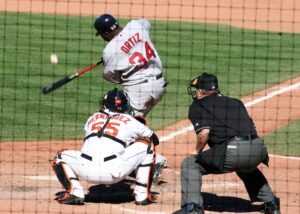
Factors that affect batting average
Batting average is an important indicator for evaluating a player’s batting ability, but various factors affect this number.
Here we will explain in detail about pitcher level and batting average, as well as ballpark characteristics and batting average.
Understanding these factors will allow you to more accurately evaluate a player’s batting average and develop strategies.
Pitcher level and batting average
The level of the pitcher is one of the factors that greatly affects batting average.
A good pitcher throws effective pitches to batters, reducing the chances of them hitting the ball.
Below we take a closer look at how pitcher level affects batting average.
Pitching speed and control: The pitcher’s pitching speed reduces the time the batter has to react to the ball. Pitchers who are good at fastballs put a lot of pressure on the batter, making it difficult for them to get their timing right. Also, pitchers with good control can effectively use the strike zone and disrupt the batter’s batting form. This can lead to a lower batting average.
Variety of breaking balls: Pitchers with many breaking balls have a big impact on batting average by showing a variety of pitches to batters. By using a variety of breaking balls such as sliders, curves, and changeups, you can throw off the batter’s timing and reduce the chances of getting a hit. Batting averages tend to be lower against pitchers who are effective at using breaking balls.
Pitching rhythm and tempo: Pitching rhythm and tempo are also important factors that affect batting average. A pitcher who throws with a good tempo can put pressure on the batter and throw him out of rhythm. Conversely, a pitcher who throws with a slow tempo can give the batter time to get into rhythm, which can lead to a higher batting average.
Match history and data analysis: By analyzing data from past matches against pitchers, batters can understand the pitcher’s pitching tendencies and weaknesses and improve their batting average. Pitchers can also affect batting averages by analyzing batters’ data and throwing more effective pitches. Teams and players with high accuracy in data analysis can develop strategies to improve their batting averages.
Ballpark Characteristics and Batting Average
The characteristics of the ballpark are also one of the factors that have a significant impact on batting average.
Each ballpark has its own advantages and disadvantages for batters due to its shape and environmental conditions.
Below we take a closer look at how ballpark characteristics affect batting average.
Field Width: Field width is a factor that directly affects batting average. A larger field can lead to a higher batting average because there is more space to get a hit, whereas a smaller field can lead to a lower batting average because there are more chances of being out.
Fence height and distance: Fence height and distance also affect batting average. Ballparks with low fences and short distances tend to make it easier to hit home runs and have higher batting averages. Conversely, ballparks with high fences and long distances may make it harder to hit home runs and have lower batting averages.
Environmental conditions: The environmental conditions of the ballpark are also a factor that affects batting average. For example, in a hot and humid environment, the ball is more likely to fly and the probability of a hit increases. The effect of wind also affects batting average. If there is a tailwind, the ball is more likely to fly farther and the batting average may increase.
Field Conditions: Field conditions are also an important factor that affects batting average. For example, the condition of the grass and the hardness of the field affect the speed and bounce of the batted ball. In good field conditions, the batted ball rolls smoothly and the probability of a hit increases. On the other hand, bad weather or poor field conditions can make the movement of the batted ball difficult to predict, which can affect batting average.
Fan support and pressure: The number of fans at the ballpark and the enthusiasm of the fans are also factors that affect batting average. In home games, the cheers of the fans can motivate the players and improve their batting average. On the other hand, in away games, the booing and pressure from the fans can affect the players and cause their batting average to drop.
There are many factors that affect batting average.
You can improve your batting average by understanding the pitcher’s level and the characteristics of the ballpark and developing a strategy accordingly.
By taking these factors into consideration during practice and games, players will be able to maximize their batting performance.
